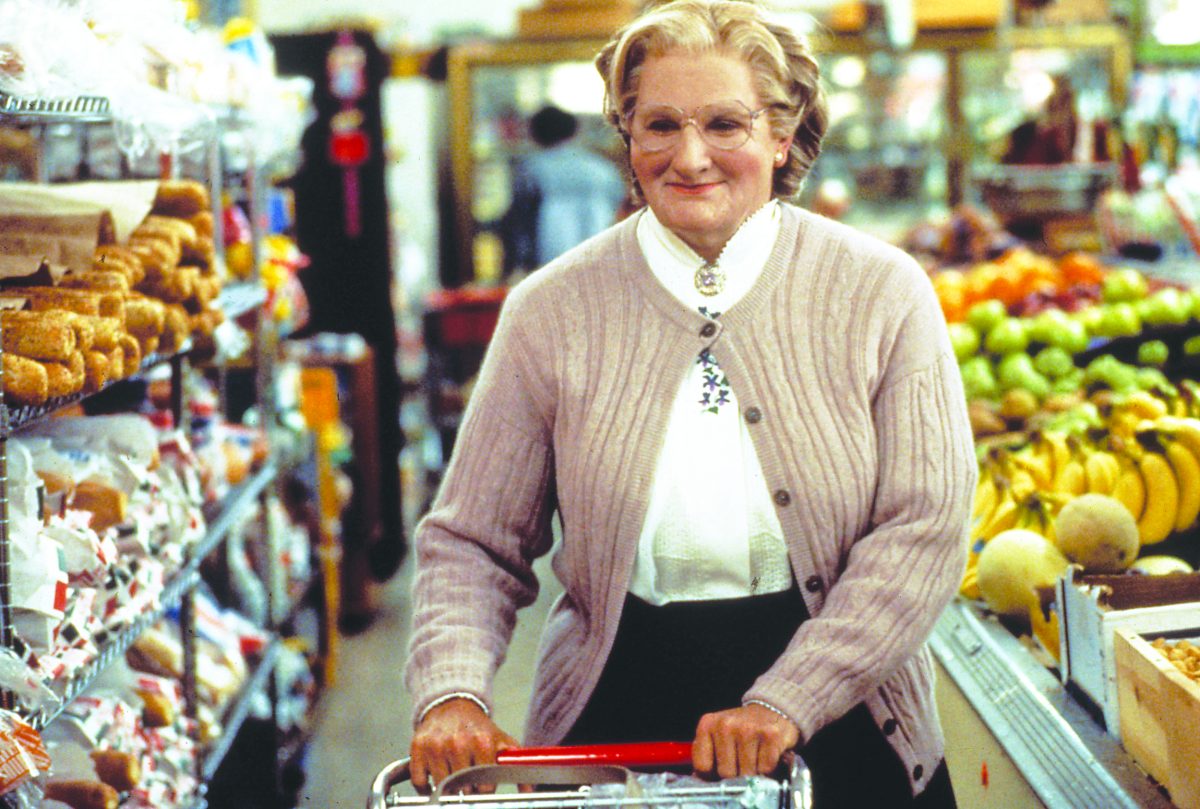A curious part of film history is how readily drag culture has been utilized for laughs by heterosexual male characters. Dating back to 1959’s Marilyn Monroe-starring “Some Like It Hot,” straight male characters have often disguised themselves in women’s clothing, usually as a form of camouflage.
Other popular examples include Dustin Hoffman’s turn in 1982’s “Tootsie,” or perhaps the most well-known to our readers, “Mrs. Doubtfire,” starring Robin Williams. In each of these films, heterosexual male characters have relied on drag in situations that would be impossible given their status as men or their recognizable nature in context of the plot.
The comedy derived from such scenarios mainly hinges on the notion that men “playing” women is amusing. Attempts at a falsetto and adhering to female stereotypes often run rampant as a result, though it is difficult to evaluate if this is in fact wholly negative. It is therefore prudent to consider the circumstances that lead characters to this course of action.
For Billy Wilder’s “Some Like It Hot,” two musicians, Joe (Tony Curtis) and Jerry (Jack Lemmon), witness a violent crime while leaving a club. To get out of town and avoid the mafia tracking them down, the two men answer an advertisement requesting two female musicians for a band traveling to Florida. The trip finds them in dire straits as they try to keep up appearances, especially after Joe (or Josephine, while in drag) develops an attraction to the troupe’s lead singer Sugar Kane (Monroe).
The idea that women would not recognize straight men in drag is a little far-fetched, though not out of the question. The term “fishy” in drag culture applies to men who, while in drag, can pass rather startlingly for women. However, both Joe and Jerry are far from fishy, if not the polar opposite. Their shrill voices and makeup are laughable and their ruse would realistically fool no one.
Yet the point of “Some Like It Hot” is not for the characters to be plausible – watching them stumble and falter as females is why the film is remembered in the first place. Wilder’s direction is first rate, a frivolous and enjoyable romp.
In contrast, Sydney Pollack’s “Tootsie” and Chris Columbus’ “Mrs. Doubtfire” find their plots hinging on a fishy performance. In “Tootsie,” a struggling actor named Michael Dorsey (Hoffman) sees an opportunity to get a part on a daytime soap, though only if he is a woman. He manages to concoct a disguise, auditioning as a surly southern woman named Dorothy Michaels. He secures the part, winning over the production and audiences alike.
His downfall comes when, like Joe in “Some Like it Hot,” he becomes attracted to a woman, in this case Julie Nichols (Jessica Lange). The inevitable unraveling of his ruse serves as the main source of tension in the script and an effective one at that. Yet the implications of Michael’s actions are multi-faceted. In one respect, he needs the work. In another, while in his role as a woman he often tries to learn about co-workers and later leverages this while flirting with them as a man, something that is considered immoral by most counts.
Perhaps the most wholesome of intentions comes from the most recent example of the bunch, 1993’s “Mrs. Doubtfire,” in which Daniel Hillard (Williams) masquerades as an elderly maid named Euphegenia Doubtfire in order to interact with his children. The film finds Daniel switching frequently between personas, an element that was explored in “Tootsie” as well. The frantic nature of the quick changing is inherently suspenseful – if discovered, the protagonist finds themselves in ruins. Success is vital to the ruse’s endurance.
All three of these films draw nothing from drag culture as it is known today, but rather use a female disguise as the backbone for comedy. It is curious that such a notion is humorous, though this might be becoming less true as gender constructs become more fluid.
The fascination with males portraying females entertains society’s own questions about the matter. Many are too frightened to consider themselves as the other gender, a thought that contradicts societal norms and conservative values. What remains of interest is if there is value in the gender stereotypes explored in such narratives. Are such implications harmful to gender relations and drag culture? Such a conversation is an ample source of debate.








